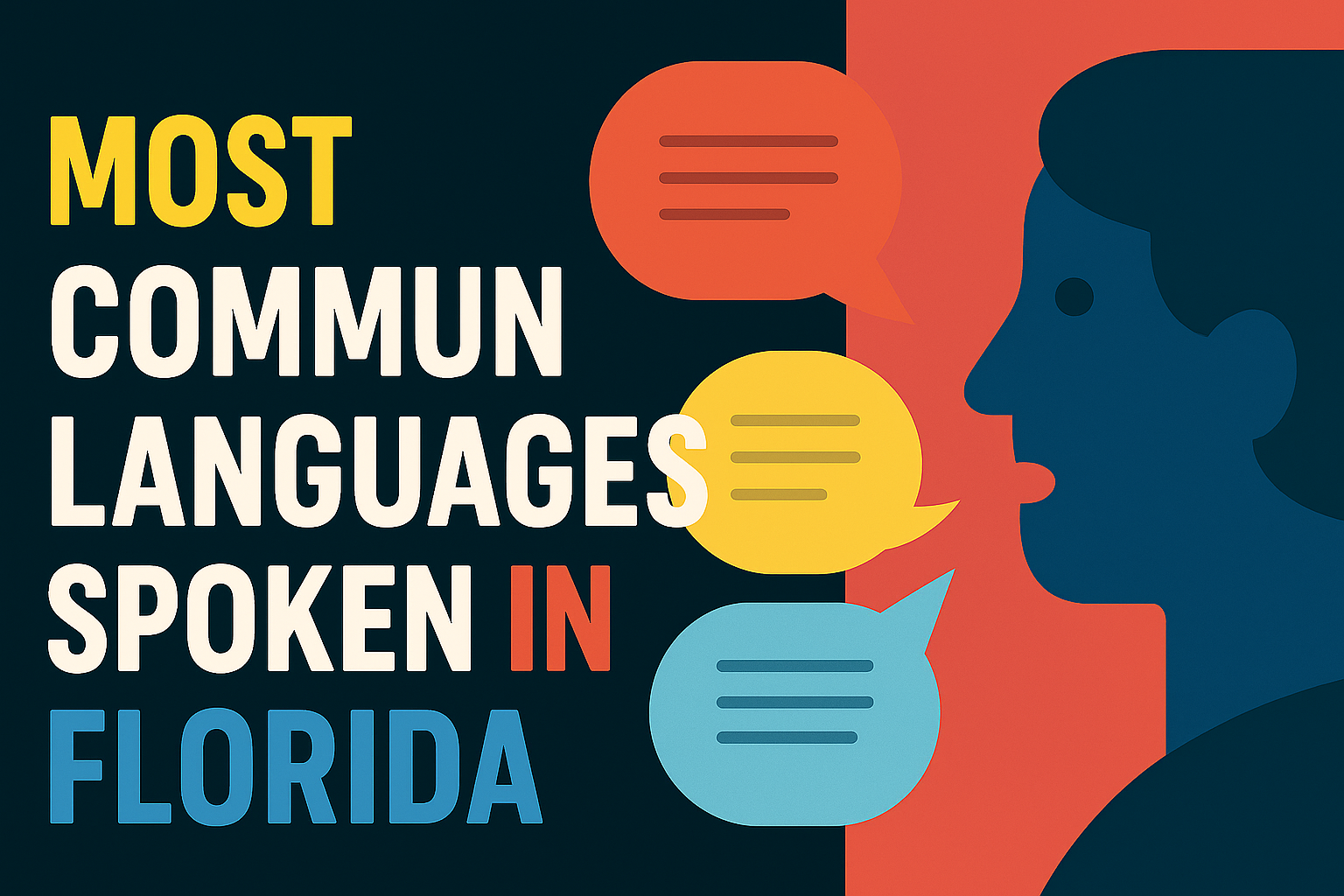Most Common Languages Spoken in Florida

Florida region has a multilingual population which speaks over 100 languages. This makes Florida a state with a very diverse language population. English is the most common language spoken here. Spanish comes second. The third most spoken language is Haitian Creole.
Conversations in Florida areas are shaped by these languages. Every language has its own sounds and words. These voices make up Florida's unique style.
Historical Overview of Florida's Languages
Local languages in Florida have changed over time. First were the native tongues. Then can Spanish language and later on English arrived. The languages have influenced the region.
1. The primary indigenous language of Florida during the pre-colonial era was Timucua. Before the arrival of the Europeans, Timucua was spoken widely amongst the population.
2. In the Colonial Era, Spanish became Florida's official language in the 1500s. For more than 200 years, Spanish speakers ruled the area. When Britain acquired authority in 1763, English speakers began to arrive. During this time, both languages fought for control.
3. After the colonization, Portuguese people arrived in Florida as part of their immigration. Some Haitian settlers brought Haitian Creole with them. These languages were mixed together. They were now spoken together to be spoken in both the languages. Each set of immigrants brought its own language. These languages are still getting stronger today.
English as the Predominant Language
60% of the people in Florida speak only English or very well understand English. English has been declared as the official language of Florida. The majority of government activity is done in English. Schools mostly teach in English. English is the most prevalent business language in business meetings.
Spanish Language
20% of the population speaks Spanish as their native language. Spanish is spoken by majority of the population. The greatest concentration of Spanish speaking people is in Miami. Orlando and Tampa have high density of Spanish speaking population. Here, it is as though one is in a Spanish speaking nation.
In Florida, most people speak Cuban Spanish. The language has its own terms and phrases. It is followed by Mexican Spanish. There are also a lot of people that speak Colombian and Venezuelan Spanish. They all sound a little different.
Native Spanish speakers speak it everywhere. They buy things in Spanish. They watch TV shows in Spanish. Their kids usually learn Spanish first. A lot of them never have to speak English in their daily lives.
Over 75.6 percent of Florida's newcomers are from Latin American countries where people speak Spanish.
Many young Spanish learners mix up their English and Spanish. People call this "Spanglish." They use more than one language at the same time. This makes a method of speech that is only present in areas like Florida.
The Influence of Creole Languages
Over 300,000 persons in Florida are fluent in Haitian Creole. This makes it the most popular language in Florida. Hispanic Creole is third ranked languages spoken in Florida. Most people who speak it live in South Florida.
Top Languages Spoken in Florida
Six main languages dominate Florida's linguistic landscape. Each has thousands of daily speakers.
1.English
English is also Florida’s official language. Most residents speak it well. Government, schools, and major businesses operate in English. News broadcasts use English primarily.
2. Spanish
20.9% of population speaks Spanish. Spanish speakers form the largest non-English group. They have their own radio stations, newspapers, and TV channels.
3. Haitian Creole
There is 2.1 percent Haitian speaking Population. The speakers of Haitian Creole concentrate in certain areas. They are well connected within the community. The language they speak provides a way of maintaining Haitian culture in Florida.
4. French
French is spoken by lot of the people here. Canadian French is also used and you can even find African French being spoken here.
5. Portuguese
Portuguese speakers mainly come from Brazil. They live mostly in South Florida. Brazilian Portuguese sounds different from European Portuguese. These speakers often understand Spanish too.
6. Other Languages
German, Italian, and Chinese also have speaker communities. Korean, Vietnamese, and Arabic speakers live here too. Each language adds to Florida's rich sound.
The Growing Importance of Multilingualism in Florida
Florida's various languages open up new possibilities. Businesses want employees who are fluent in multiple languages. Schools teach multiple languages to the students. Translation services have a great significance here.
1. Global Trade
Florida conduct business with many Spanish speaking countries. Business in Brazil is easier when you speak Portuguese. These languages speed up the process of making deals. They help partners trust each other.
2. Tourism
Since Florida is a hub for tourists, you can find various languages being spoken here. Spanish speakers originate from Latin America. Portuguese speaking people are of Brazilian origin. French speaking people include those of Haiti and France. Those employed in tourism acquire such languages to enable them to be better placed in assisting tourists.
3. Translation Services
The demand for translation increases annually. Spanish and Creole speakers need interpreters in court. Hospitals need somebody who can translate medical language. Schools require somebody who can translate for parents and teachers. Legal records need to be translated into more than one language.
Conclusion
The Florida languages create a diverse fabric of communication. The most significant language is English whereas Spanish, Haitian Creole, Portuguese, and French are significant as well. Every language serves the purposes of the respective group. These languages will keep getting bigger. The future of Florida's bilingual population is diversified and promising.